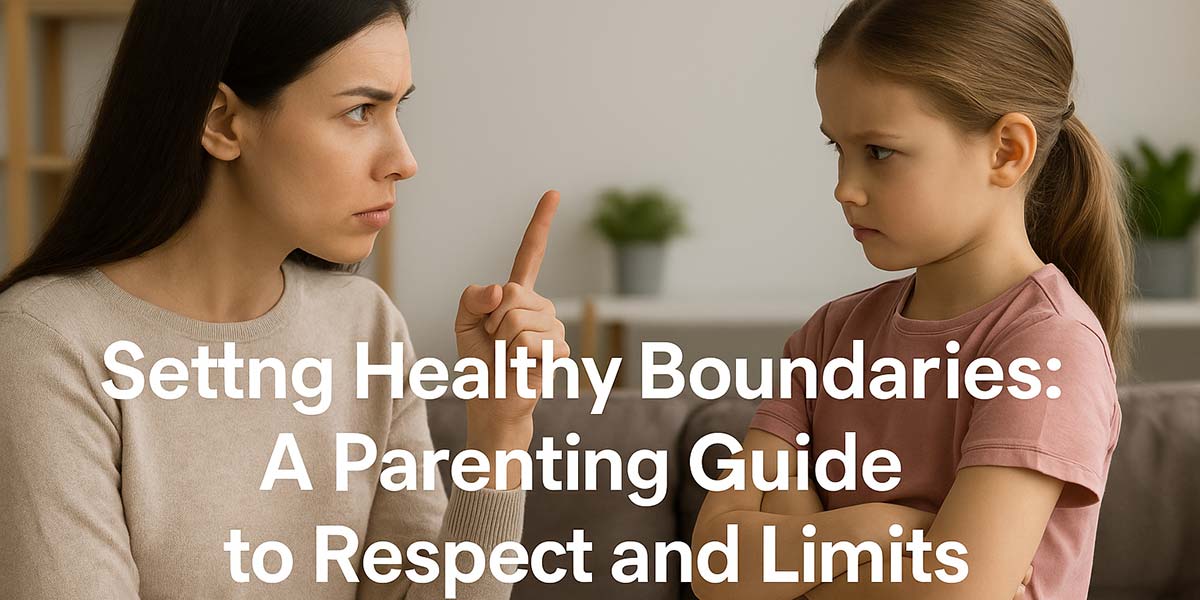
Setting Healthy Boundaries: A Parenting Guide to Respect and Limits
Setting boundaries is one of the most powerful tools in a parent’s toolkit. Yet for many, it’s also one of the hardest. How do you balance being nurturing with holding the line? How can you enforce rules without constant conflict?
In this guide, we’ll explore how to learn how to set boundaries as a parent—and why it’s essential for your child’s emotional development. Grounded in the Positive Parenting philosophy of James A. Baker, you’ll discover how to guide with confidence, empathy, and clarity.
Why Boundaries Matter in Parenting
Children need boundaries like they need food and sleep—they provide structure, security, and predictability. When boundaries are clear, children know what to expect, and parents don’t have to rely on punishment or yelling to maintain control.
James A. Baker’s Positive Parenting model encourages setting respectful, consistent limits rooted in love and mutual understanding—not fear or control. It’s about teaching children how to make good choices, not just forcing obedience.
Common Mistakes Parents Make with Boundaries
1. Being Inconsistent
When rules change from day to day, kids get mixed signals. They may test limits more often or feel confused about what’s expected.
What to Try Instead: Set clear expectations and follow through consistently. If bedtime is 8:30 p.m. on weekdays, stick to it—even when you’re tired or tempted to give in.
2. Using Harsh Discipline
Strict or punitive boundaries can lead to fear and resentment rather than respect. Kids may comply in the short term but disconnect emotionally over time.
What to Try Instead: Use natural consequences and calm redirection. Positive Parenting encourages guiding behavior through reasoning and empathy rather than control.
3. Avoiding Boundaries to Stay “Liked”
Some parents worry that setting limits will hurt their child’s feelings or make them seem mean. But skipping boundaries to avoid conflict can actually harm your relationship long-term.
What to Try Instead: Boundaries are a form of love. When done right, they build trust and safety—two of the most important foundations in parent-child relationships.
How to Set Boundaries as a Parent (the Positive Way)
1. Get Clear on Your Values
Start by asking yourself what’s most important in your home—respect, kindness, honesty, consistency. These values will shape your boundaries and make it easier to explain them to your child.
2. Use “When-Then” Language
Instead of saying “no” all the time, reframe boundaries using the “when-then” approach. For example: “When your homework is finished, then you can watch TV.”
3. Stay Calm and Kind
Your tone matters. Boundaries don’t have to be loud or angry to be effective. Set your limit with warmth, and be firm without guilt.
4. Let Consequences Teach
Instead of punishing, allow natural or logical consequences to do the teaching. If your child forgets their jacket, they might feel cold at school—next time, they’ll likely remember.
5. Model Boundaries Yourself
Children learn by watching. Respect your own limits—say no when you’re overwhelmed, ask for space, and show how to enforce boundaries respectfully with others.
Boundaries Without Shame or Guilt
Setting boundaries doesn’t mean being rigid or unkind. In fact, boundaries allow more freedom, not less—because your child knows exactly where the edges are. Positive Parenting encourages guiding your child with love, logic, and respect.
Remember: Boundaries are a sign of a healthy, confident parent—not a controlling one. When done well, they lead to less stress, fewer power struggles, and stronger relationships.
Want More Support with Boundaries?
Setting healthy limits takes practice and support. Our Online parenting classes are designed to help you gain confidence, master Positive Parenting tools, and raise emotionally healthy, respectful kids. Whether you’re dealing with toddlers, teens, or somewhere in between, there’s something for you.
Final Thoughts: Boundaries Are a Gift
Healthy boundaries teach children how to manage frustration, take responsibility, and respect others—all while feeling secure in your love. It’s not about control—it’s about connection. Set your limits with clarity and kindness, and your child will flourish.